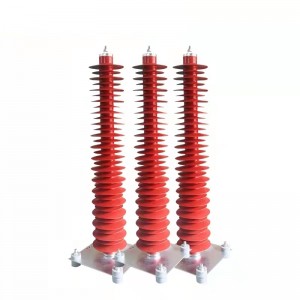Overview
Zinc oxide arresters are suitable for power generation, transmission, substation and distribution systems with AC 220kV and below. It is used to limit the magnitude of lightning and overvoltages in the system to specified levels. It is the basic equipment for the insulation coordination of the whole system. It is the best lightning protection component in the integrated and modularized medium and high voltage power transmission and transformation equipment.
Power station type zinc oxide arrester is a kind of arrester with good protection performance. Using the good nonlinear volt-ampere characteristics of zinc oxide, the current flowing through the arrester under normal working voltage is extremely small (microamp or milliamp level); when the overvoltage acts, the resistance drops sharply, and the energy of the overvoltage is released to play a to protection. The difference between this arrester and the traditional arrester is that it has no discharge gap, and uses the nonlinear characteristics of zinc oxide to play the role of leakage and interruption.
Features
1. Small size, light weight, collision resistance, no damage to transportation, flexible installation, suitable for switch cabinets
2. Special structure, integral molding, no air gap, good sealing performance, moisture-proof and explosion-proof
3. Large creepage distance, good water repellency, strong anti-fouling ability, stable performance, and reduced operation and maintenance
4. Zinc oxide resistor, unique formula, small leakage current, slow aging speed, long service life
5. The actual DC reference voltage, square wave current capacity and high current tolerance are higher than the national standard
Power frequency: 48Hz~60Hz
Conditions Of Use
- Ambient temperature: -40°C~+40°C
-Maximum wind speed: no more than 35m/s
-Altitude: up to 2000 meters
- Earthquake intensity: no more than 8 degrees
- Ice thickness: not more than 10 meters.
- The long-term applied voltage does not exceed the maximum continuous working voltage.








